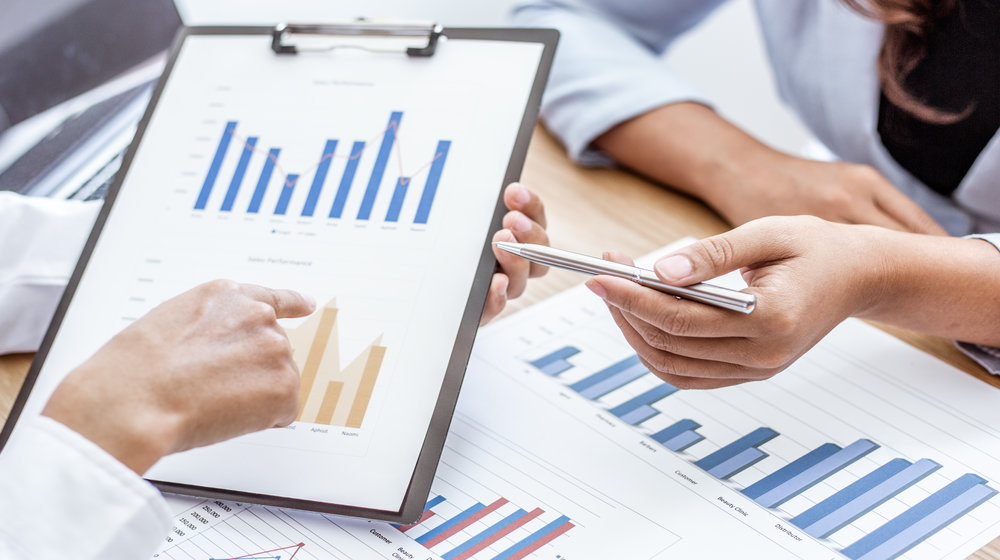Market Forecasting Basics: 8 Steps
Xant Team
Here we’ll share the basics of market forecasting, and exactly what you need to know to jump in and get started.
RELATED: The Six Principles Of Sales Forecasting
In this article:
How to Market Forecast Simply

Why Is Market Forecasting Important? market forecast
Market forecasting is sometimes an overlooked part of business management, but it’s an essential tool for predicting future events. Knowing, or at least having an idea about future trends, can significantly help leaders make informed business decisions.
1. Pinpoint the Problem
Choose a data point or identify a problem. The question should be something like, “what will our sales look like in the next year” or “how will the market react to our new product.”
If you have a decent forecasting tool, this may seem a simple step. Still, in reality, some issues need evaluating by the people who will be maintaining and gathering forecast data. It will be difficult for any tool to help at this point because information on the customer base, competitors, and how the market works needs to be addressed.
2. Determine the Variables
The forecaster should now identify the appropriate and important data set that is needed to make the forecast, ones that are relevant to the business, and then decide how to collect the information.
Sales Forecasting Schedule
It’s normal to forecast each month for 12 months ahead and then annually up to five years. Forecasting too far ahead is likely to be inaccurate as the economy and your business will change within that time. That said, all forecasts are wrong to some degree because they are just the best guess. One advantage of this is that they are fluid and can be adapted.
3. Choose Your Forecasting Model
Select a model that fits your business the best. Ideally, you’re looking for one that gives you the best prediction, but at the start of a business, this will be an unknown entity. The data that you chose will affect which model is chosen, so pick the model that fits the dataset, assumptions, and selected variables.
Although there are numerous different methods by which a business forecast is made, they all fall into one of two categories: qualitative and quantitative.
Gather knowledge from experts as well as factual data. Historical data may not be available yet for new products, but judgments and opinions made by a variety of specialists will be; this is known as qualitative forecastings.
In contrast, quantitative forecasting uses available data to analyze and predict future values. An example of this might be a store stock check of a particular product used to predict sales and then used to refill stocks.
Qualitative Forecasting market forecast
This forecasting model is particularly successful with short-term predictions when there is limited historical data. It uses people’s views and can, therefore, be unreliable compared to measurable data.
Qualitative models include:
-
- The Delphi method is a qualitative forecasting model which requires information and opinion from several field experts or Market Mavens. It is assumed that the forecast is more accurate because of the aggregate data.
- The Market Research model requires a poll from a large number of people about their willingness to buy a particular product or service and to use this data to predict how many products will be purchased once launched.
Qualitative Forecasting
These models rely on having sufficient raw data to predict future values and avoids the unpredictability of the human element, which is removed from the equation.
Mathematical values exist to make these predictions that factor in variables like the unemployment rate, and Gross Domestic Product (GDP) to build long term forecasts.
Qualitative models include:
-
- The Indicator Approach – looks at the relationship between sets of data
- Econometric Modelling – assesses the stability of datasets and is used for a more targeted approach.
- Time Series – uses past data to predict future events.
RELATED: 6 Forecasting Strategies For More Accurate Sales
4. Test the Data market forecast
Perform initial analysis of the data to see it is usable. Check trends and patterns shown in the data to see if they are helpful. Cut out any unwanted data.
5. Cut Out Wasteful Data
Making a 100% accurate forecast is impossible, so the process should be simplified as much as possible while still retaining a degree of accuracy. You will need to make some assumptions at this point to cut down the amount of unwanted data to make the forecast straightforward.
RELATED: How To Manage A Sales Team While You Work From Home
6. Data Analysis market forecast

Using your chosen model, run the data, analyze it, and make the forecast.
Use Visuals
Make your figures graphic and convert them into a chart or diagram.
This will make it so much easier and more enjoyable, to visualize any forecasting issues that can be addressed straight away.
7. Verification market forecast
When you can, check your forecast against the actual data. Check for accuracy and identify any problems. Ensure you make any changes to the variables or change any necessary steps.
8. Track Progress of Your Forecasting Strategy
Forecasting isn’t a measure just to get the business up and running. Successful companies use their market forecast to calculate their progress and use it as a management tool to run the business better.
Tools can help you to compare your forecast to accounting systems. Don’t do unnecessary work when a system can do it for you.
Have regular financial review meetings. Check your organization’s finances compared to forecast, see if you’re on track. Put measures in place to alter work if you’re surpassing goals or falling short, unless there are reasons not to. This way, your company numbers drive your plan.
Final Note
Ultimately, all market forecasts are educated guesses irrespective of whether they mirror the specifics of a business.
There are risks involved with forecasting because of the unlimited number of variables and relying on historical data or data based on opinion.
What simple market forecasting strategies do you use? Share them with us in the comments section below.
Up Next: